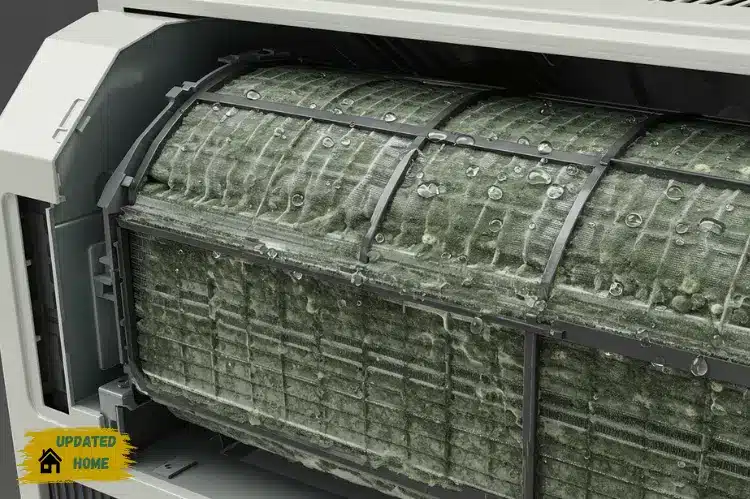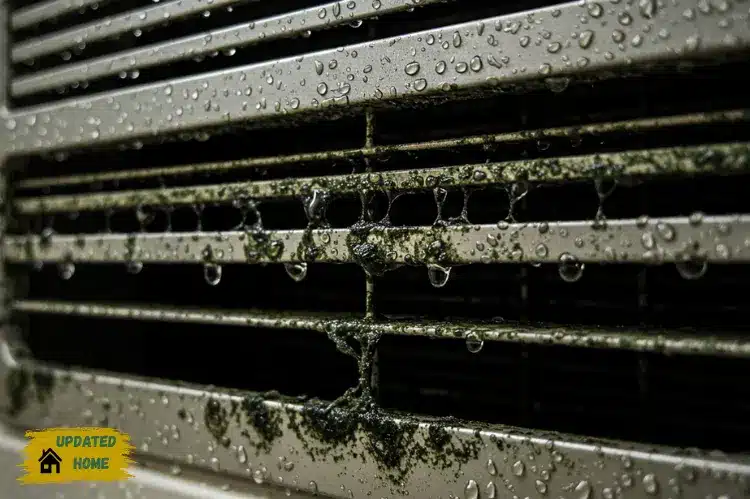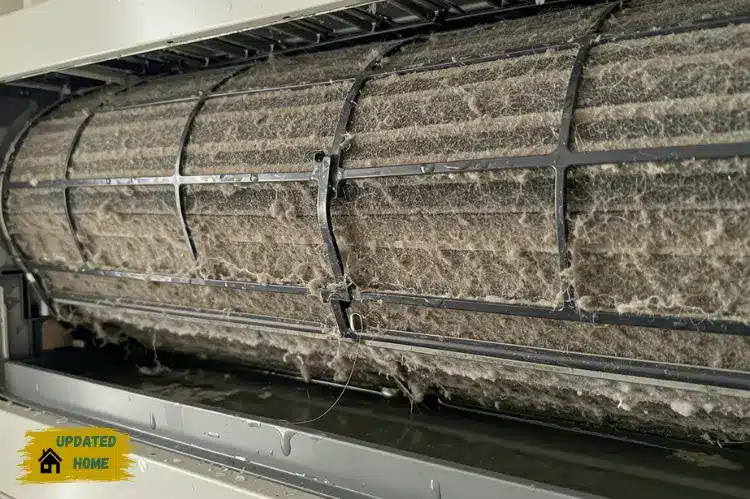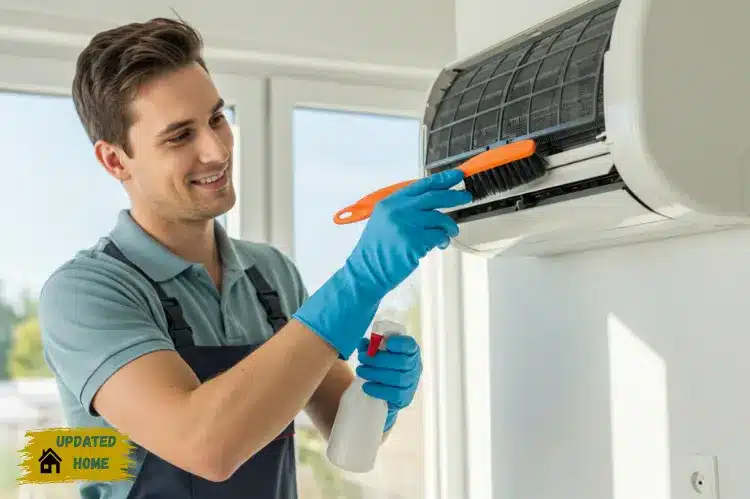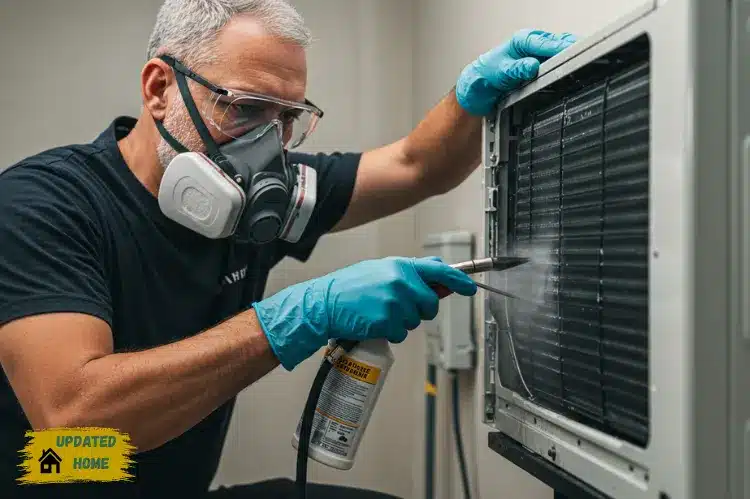Have you ever experienced that damp smell when you switch on your aircon? It could be a smell that can signify mold in the system. Air conditioning may provide a cool, wet ambiance where mold spores can grow. With the movement of air, such spores might enter your house.
After inhaling, they can damage your health, especially when one experiences weak immunity, asthma, or allergies. There is even an added risk due to the humid climate in Singapore. Therefore, one needs to learn about the causes, signs, and solutions. This blog will discuss whether your air conditioner is spreading mold spores and ways to avoid this.
Table of Contents
How Mold Grows in Air Conditioners
Air conditioners use evaporation in cooling air. Due to the use of coils and ducts, moisture usually accumulates within them. Failure to clean this moisture may lead to the growth of mold. Spores grow on dust and dirt in filters. Weather facilitates growth since spores tend to flourish in humid conditions, which has been the case in Singapore.
Spores spread through the rooms as the air carries them through the unit. As a result, this may influence indoor air quality. Besides, ill-managed systems have better chances of harboring latent mold colonies. It is vital to cut this spread by regularly inspecting and servicing. When preventive care is ignored, your air conditioner can soon become a mold machine.
Why Mold in Aircon Is Harmful
One cannot see mold spores with the naked eye. When inhaled, they may cause sneezing, coughing, and wheezing. Hypersensitive individuals can develop rashes or have breathing problems. Older adults and children are at significant risk. Chronic sinus infections can happen through prolonged exposure.
The toxins found in molds can possibly interfere with concentration and sleep quality. Also, spores can aggravate the symptoms of pre-existing asthma. Excessive exposure to molds reduces immunity and causes allergies. Hence, neglect of mold in aircon may compromise your family’s health. A cooling system is vital in defining healthy air quality at home. Frequent care keeps people safe, comfortable, and in good respiratory health.
Signs Your Aircon Has Mold
Having mold in your aircon is something that you might not know how to detect. These are the signs to look out for:
- When running, a musty odor is present.
- Obvious green or black stains on vents.
- Cough or sneezing at home more.
- Dusty polluted air filters.
- Too much condensation near the unit.
When you see those, there is a possibility that mold is already releasing spores inside the buildings. Failure to appreciate these cues may aggravate the issue. People cannot see it because the spores are too small to be seen with the naked eye; the safest way is to have a professional inspection with indoor air quality testing. An early intervention safeguards your air and eliminates expensive health conditions.
Health Effects of Mold Spores from Aircon
The mold spores that you inhale every day can lead to invisible damage. Eyes, nose, and throat irritation are short-lasting consequences. Individuals can experience fatigue or get regular headaches. The risk assumes a greater value in children since the lungs are still developing. Older people are also likely to feel weaker after long-term exposure.
The spores can cause bronchitis or a chronic asthma attack in certain instances. Skin infections such as eczema could also be worsened by mold. The allergic reactions are more likely to be experienced by sensitive persons. Thus, the problem with mold in aircon systems is not only the issue of comfort. It will help you avoid risky respiratory disease development and save your health.
Common Causes of Mold in Aircon
There are various reasons why molds are forming in air conditioners.
- Excessive moisture makes the environment wet all the time.
- Dirty filters catch dust and spores.
- Lack of drainage results in excessive pooling of water.
- The harbors of unclean ducts keep the colonies.
- Mold thrives on irregular servicing.
Spores require wet conditions and nutrition; even minor leaks establish growth zones. Above all, the worst mistake homeowners can make is forgetting to clean. Awareness of these causes helps take preventive measures. When detected, professional cleaning can prevent mold development even before it destroys the quality of your indoor environment.
Preventing Mold Growth in Aircon
Prevention is always better than a cure. Follow these steps to reduce mold risk:
- Clean or replace air filters monthly.
- Ensure proper drainage to avoid pooling.
- Schedule professional servicing twice yearly.
- Use a dehumidifier to lower moisture levels.
- Keep ducts and vents dust-free.
Additionally, always run your aircon on the right settings. Setting the temperature too low may create excess condensation. A balanced temperature reduces moisture while keeping the air cool. Preventive care not only stops mold but also improves cooling efficiency. A clean aircon also lowers electricity costs over time.
Professional Aircon Mold Removal
If you have a suspicion of mold, call experts to clean it up. There are secret parts of the system that trained technicians can access. To kill spores, they employ safe disinfectants. Powerful air scrubber machines assist in cleaning the mold and ensure it does not spread.
In worst cases, this would have to be replaced by a duct. DIY cleaning does not reach the colonies that are hidden. Besides, improper handling of mold can cause aerial release of more spores. Treatment performed by professionals guarantees elimination and prevention. Most of the aircon service providers in Singapore are mold prevention specialists. Involvement in professional mold removal Singapore guarantees the absence of health risks, yet effectiveness. The professional care is worth safe indoor air.
DIY Tips for Keeping Aircon Mold-Free
Although professional cleaning is best, some DIY steps help too.
- Wipe vents regularly with mild cleaners.
- Keep windows closed when aircon is running.
- Empty water trays daily if present.
- Use vacuum attachments for surface dust.
- Avoid smoking indoors, as smoke feeds mold.
However, always wear gloves and masks when cleaning. Mold spores can spread easily while scrubbing. Therefore, limit DIY efforts to basic surface care. Experts should handle deep cleaning. Still, these small steps add extra protection between service visits.
The Closing Note
If your aircon is not serviced, it can be the source of mold creeping without you noticing. These spores have health, comfort, and indoor air quality impacts. It is essential to realize the warnings and preventive measures. Spreading of the spores is prevented by regular servicing, proper drainage, and filter cleaning.
DIY cleaning is useful, but professional servicing secures absolute safety. Because the climate in Singapore spurs the growth of molds, preventive treatment is essential. After all, your aircon must be able to blow you fresh, clean air instead of dark secrets.
Cleaner air conditioning is the first step towards the preservation of the well-being of your family. So, it is time to examine your air conditioner and take the proper steps to bring a healthier and safer home.
Read Next: 4 Pro Tips for Commercial Air Conditioning Maintenance

